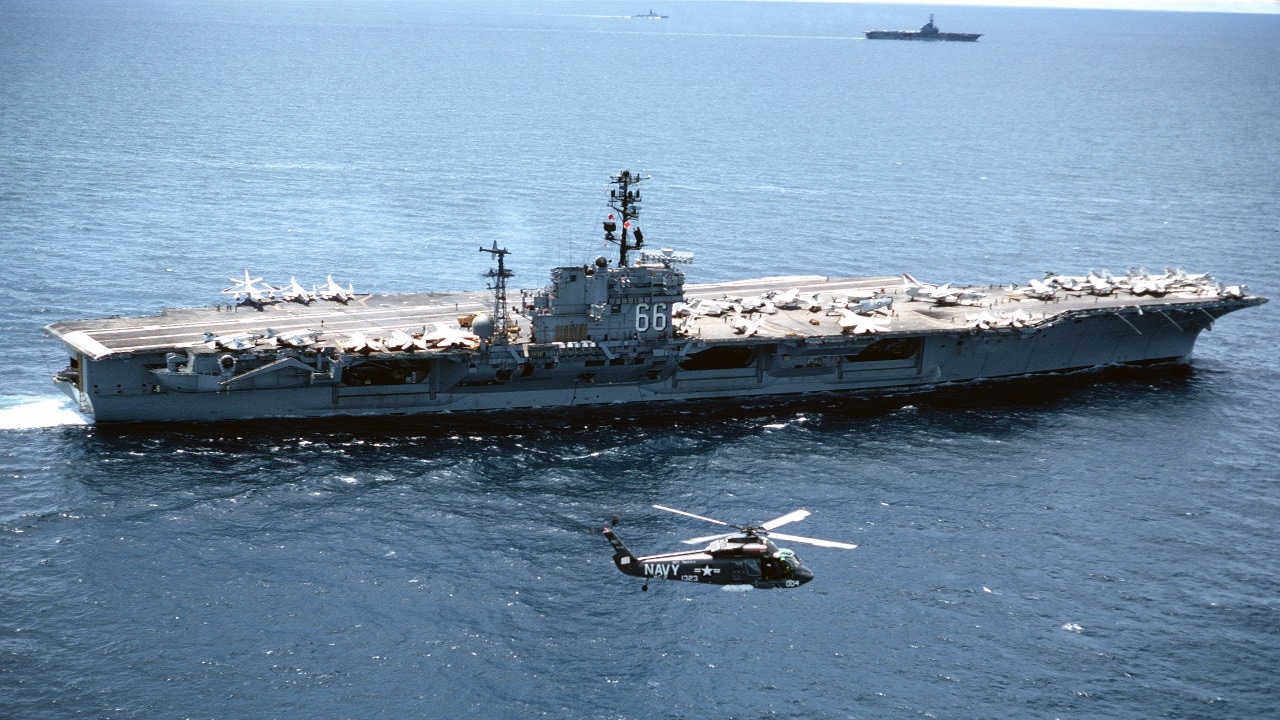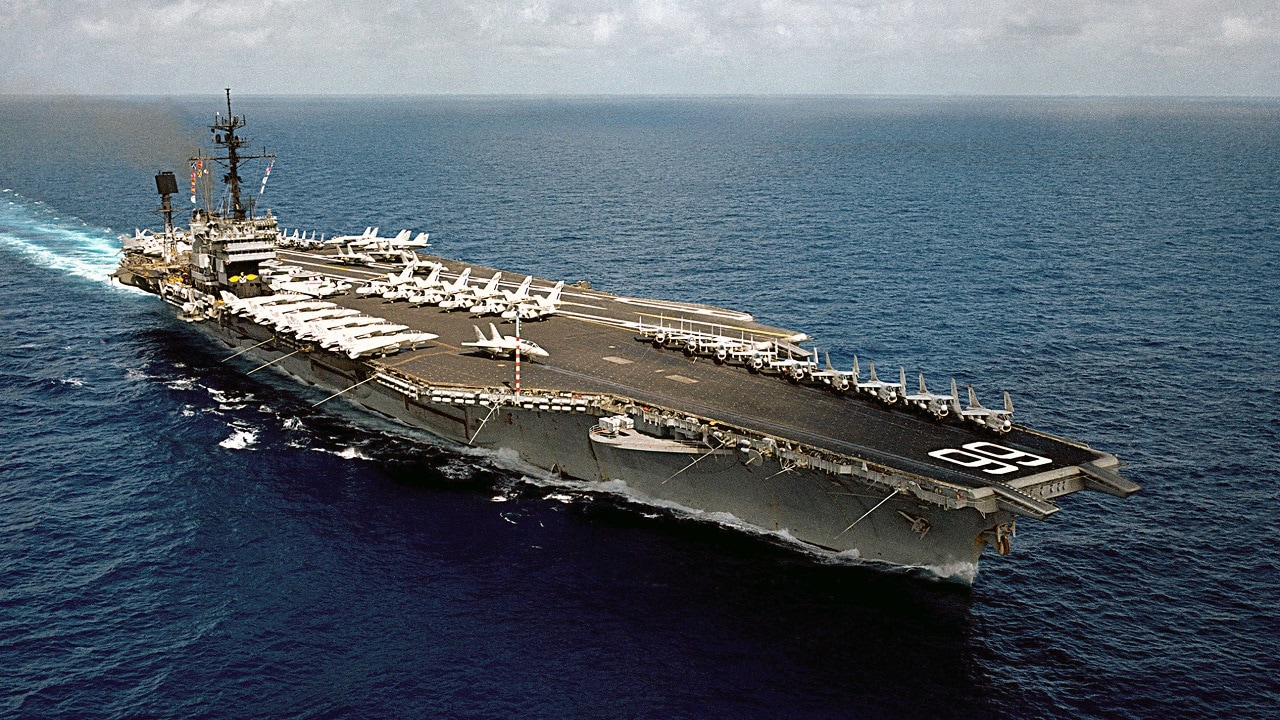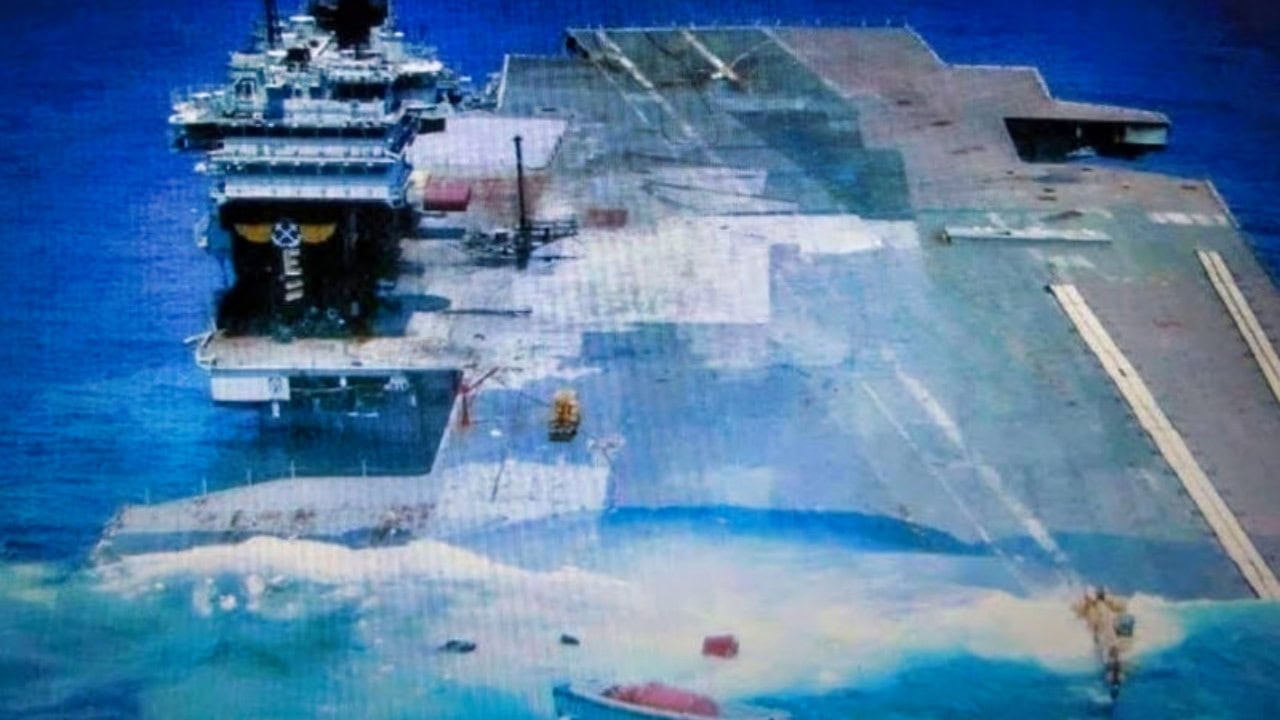Key Points: The USS America, a Kitty Hawk-class aircraft carrier, was deliberately sunk in 2005 during a “SinkEx” live-fire exercise to study its survivability in combat.
-Commissioned in 1965, the 1,000-foot-long carrier had a distinguished service record in Vietnam and Operation Desert Storm.
-After decommissioning in 1996, it was subjected to simulated torpedo, missile, and bomb attacks to assess damage resilience.
-Remarkably, it endured weeks of punishment before being scuttled with explosives.
-This exercise demonstrated the durability of U.S. aircraft carriers and informed the design of future vessels to improve survivability, highlighting the importance of readiness for modern naval warfare challenges.
Why Did the U.S. Navy Sink Its Own Carrier?
I worry constantly about a U.S. Navy aircraft carrier being sunk in combat.
Numerous anti-ship missiles from China can take out a flat-top.
Torpedoes from enemy submarines can do the same, not to mention air-to-surface munitions that could sneak past a carrier’s defenses and do the worst.
But what if I told you the Navy once sunk its aircraft carrier on purpose?
Hard to believe, but true.
The Story Behind the USS America
Allow me to give you some background information about the carrier in question. The USS America, known as the “Big A” to the sailors who served on it, was a Kitty Hawk-class carrier. The flat-top did not have a nuclear-powered propulsion system, it ran on older steam turbine-powered propellors, according to Business Insider.
Because of high costs during initial construction, builders decided to utilize fuel-burning boilers. The keel was laid down in 1961 during the presidency of John F. Kennedy, who, as a Navy veteran, was excited that the maritime branch would have another instrument of power to fight the Soviet Union on the high seas. USS America was finally commissioned in 1965.

A Helicopter Combat Support Squadron 2 (HC-2) UH-2 Seasprite helicopter flies off the starboard side of the aircraft carrier USS AMERICA (CV 66) while the ship is underway. An unidentified aircraft carrier is in the background.
One of the Early Super Aircraft Carriers
One problem with the Big A was its cost—a gargantuan $400 million—serious money at the time. But it was going to be a marvel.
This carrier was 1,000 feet long with a four-acre flight deck and could launch at least 100 aircraft.
Get Those Airplanes in the Air Quickly
Another notable innovation was the angled launch area, which allowed one airplane to take off while another landed in real-time. This improved the sortie rate and overall operational tempo.
You could imagine how excited the Navy would be about this design. It would require a crew to be highly trained and expert at their jobs, not to mention pilots who would make no mistakes when landing or launching. But all the dangerous choreographed simultaneous actions on the flight deck would be worth it.
The ship was also pilot-friendly, with another major invention that made landing easier. This was known as the Optical Mirror Landing System, a group of mirrors and lights that enabled safer recovery, especially at night when it was more difficult to “Call the Ball.”
USS America: Excellent Service Record in Vietnam
When the crew and aviators were ready after shake-down cruises and deployments to the Mediterranean, it was time to enter the fray in Vietnam.

The U.S. Navy aircraft carrier USS America (CV-66) underway in the Indian Ocean, 24 April 1983. America, with assigned Carrier Air Wing 1 (CVW-1), was deployed to the Mediterranean Sea and the Indian Ocean from 8 December 1982 to 2 June 1983.
Amazingly, the USS America lost no airplanes while deploying tons of munitions. Pilots flew over 10,000 sorties during the war. The carrier also served gallantly in Operation Desert Storm.
Then, after the Cold War ended, the Big A was on the chopping block due to budget constraints. Instead of investing money in a service life extension, the Navy decided to decommission the ship in 1996.
What Is a ‘SinkEx?’
It spent almost a decade in retirement. But then the Navy devised an operation called the “SinkEx” with America. This was going to be a live-fire drill off the coast of Virginia. The idea was to create a war-like situation and sink the carrier.
The Navy would learn how survivable a carrier could be in battle. It would conduct an after-action review after logging damages and noting how the ship could be destroyed. Then the idea was to figure out the best way to design future carriers for better survivability in combat.
The first test simulated an attack from a submarine, and explosive charges were set off below the water line to mimic torpedoes. Then airplanes launched missiles and dropped bombs to test the resiliency of the flight deck and keel. That should have done the trick and sent the carrier to Davy Jones’ Locker.
However, the USS America survived four weeks after this pounding.
It could take a punch. Finally, the Navy decided to destroy America with a series of explosives on board that would surely sink it. It finally went down and stayed intact at the bottom of the Atlantic near South Carolina and Bermuda in May 2005.

The U.S. Navy aircraft carrier USS America (CV-66) underway in the Indian Ocean, 24 April 1983. America, with assigned Carrier Air Wing 1 (CVW-1), was deployed to the Mediterranean Sea and the Indian Ocean from 8 December 1982 to 2 June 1983.
What Can We Learn from Sinking an Aircraft Carrier?
Does that mean a modern aircraft carrier could take multiple hits from torpedoes, missiles, and bombs and still stay afloat?
USS America showed how difficult a carrier would be to sink. A determined crew and brave officers could keep a nuclear-powered flat-top steaming ahead and maneuver it to a friendly port for repairs without it sinking should it be successfully attacked.
If a carrier were hit and taken out of combat against China, it would have to make it to Guam for refurbishment, but at least the aircraft carrier could serve again someday, and most of the sailors would survive.
Thus, the “sinking” of USS America was vastly critical to the future of naval warfare. If I had served on the ship in the Persian Gulf or off the coast of Vietnam, I would have been sad that it met that fate, but at least I would have known its final job—to die honorably—would help the Navy overall.
About the Author: Dr. Brent M. Eastwood
Brent M. Eastwood, PhD, is the author of Don’t Turn Your Back On the World: a Conservative Foreign Policy and Humans, Machines, and Data: Future Trends in Warfare, plus two other books. Brent was the founder and CEO of a tech firm that predicted world events using artificial intelligence. He served as a legislative fellow for U.S. Senator Tim Scott and advised the senator on defense and foreign policy issues. He has taught at American University, George Washington University, and George Mason University. Brent is a former U.S. Army Infantry officer. He can be followed on X @BMEastwood.

